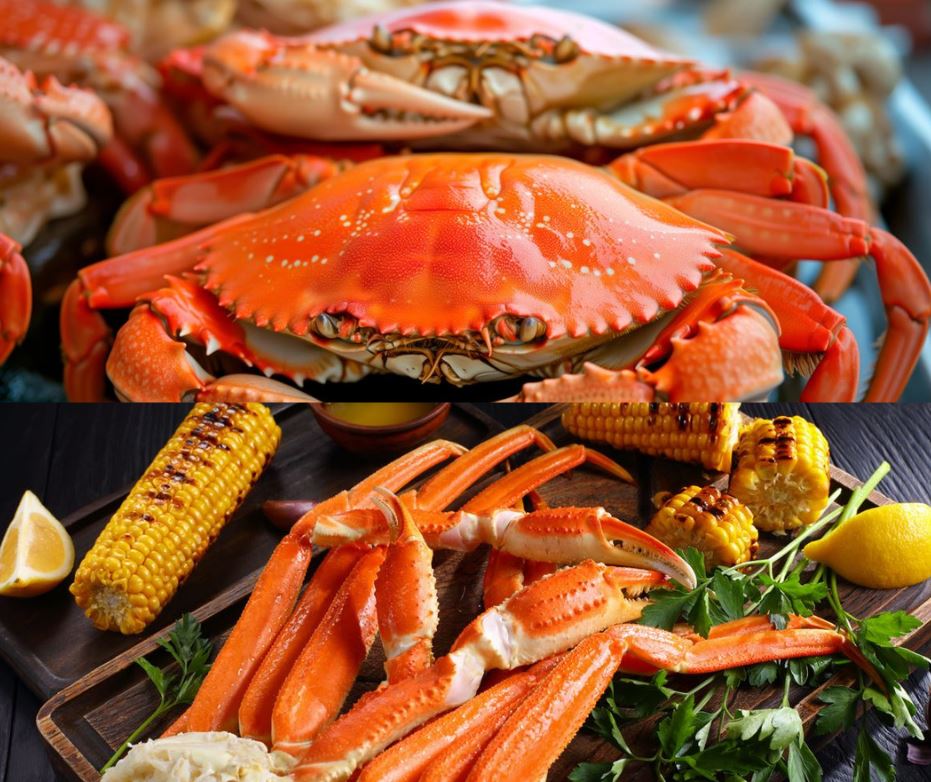
Maryland Blue Crab Trivia: Fun and Fascinating Facts About These Tasty Crustaceans
08/14/23 12:46PM
As the pride of the Chesapeake Bay and a beloved delicacy among seafood enthusiasts, the Maryland Blue Crab, scientifically known as Callinectes sapidus, holds a special place in the hearts (and stomachs) of many. But have you ever asked yourself “How do crabs mate?” “Is crab meat healthy?” or “What do blue crabs eat?” Crab questions abound, and chances are, you don’t know all the answers.
You’re in luck! Today, we’ll be revealing some intriguing and fun facts about blue crabs that will leave you amazed by the wonders of these spectacular sea creatures. Let’s dive into the world of these cool crustaceans and uncover some exciting trivia!
A Crab of Many Eggs: The Remarkable Reproduction
One of the most astonishing aspects of the Maryland Blue Crab is its prolific ability to reproduce. During mating season, which typically occurs from May to October, female blue crabs release egg masses containing millions of eggs. These distinctive egg masses, commonly referred to as "sponges," can be easily identified as they turn from dark orange to black before hatching. Female blue crabs carry these egg masses under their abdomen until the eggs are ready to hatch, contributing to the thriving population of these crustaceans in the Chesapeake Bay and beyond.
An Aquatic Nomad: The Range of Blue Crabs
The habitat of the Maryland Blue Crab extends far beyond the Chesapeake Bay's brackish waters. Blue crabs live all over the Atlantic coast — from Nova Scotia in Canada to the Gulf of Mexico — making them a widely distributed species. Their ability to adapt to varying salinity levels allows them to thrive in both freshwater and saltwater environments, further contributing to their abundant presence in North American waters.
A Delicate Courtship: Blue Crab Mating Rituals
The courtship of blue crabs is a fascinating spectacle to behold. Male blue crabs initiate the mating process by attracting females through intricate courtship rituals. Once a female is receptive to mating, the pair engages in a delicate dance where the male cradles the female under his body. This intimate embrace, known as "the mate-guarding position," continues until the female sheds her exoskeleton and becomes a soft-shelled crab — a stage when she is most vulnerable to predators.
A Feast on the Menu: The Blue Crab's Varied Diet
Since these creatures are opportunistic omnivores, blue crab diets consist of a diverse range of foods. These crustaceans will consume almost anything they come across, including dead fish, mollusks, algae, and even smaller crabs. Their adaptability and voracious appetites ensure they play an essential role in the ecosystem by contributing to nutrient cycling and controlling populations of smaller prey species.
Live Long and Prosper: Lifespan and Growth
The life cycle of the Maryland Blue Crab is both fascinating and impressive. After hatching from the egg mass, young blue crabs go through several molts before reaching maturity. The average lifespan of a blue crab is around three years, during which males and females may molt up to 25 times. As they grow, blue crabs shed their exoskeletons, providing the opportunity for researchers and crab enthusiasts alike to observe their remarkable transformation and growth.
Crabs Are Cool!
From their astounding reproduction and widespread habitat to their delicate mating rituals and varied diet, the Maryland Blue Crab is undoubtedly a fascinating creature. As you indulge in the sumptuous taste of these crustaceans, take a moment to appreciate the wonders of the blue crab's scientific and ecological characteristics. At Harbour House Crabs, we take pride in offering the finest and freshest blue crabs for your enjoyment. Get Maryland crab cakes shipped right to your door, savor each delicious bite, and continue to marvel at the captivating world of these beautiful swimmers. Bon appétit!




